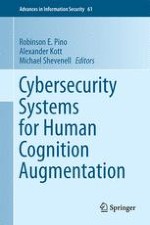2014 | OriginalPaper | Chapter
10. Low Power Neuromorphic Architectures to Enable Pervasive Deployment of Intrusion Detection Systems
Authors : Tarek M. Taha, Raqibul Hasan, Chris Yakopcic, Mark R. McLean
Published in: Cybersecurity Systems for Human Cognition Augmentation
Publisher: Springer International Publishing
Activate our intelligent search to find suitable subject content or patents.
Select sections of text to find matching patents with Artificial Intelligence. powered by
Select sections of text to find additional relevant content using AI-assisted search. powered by
